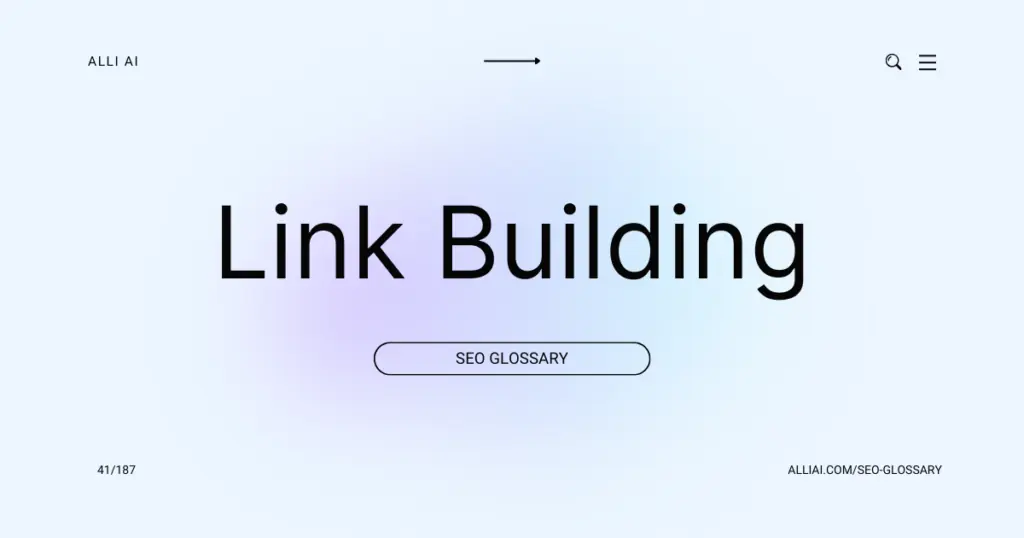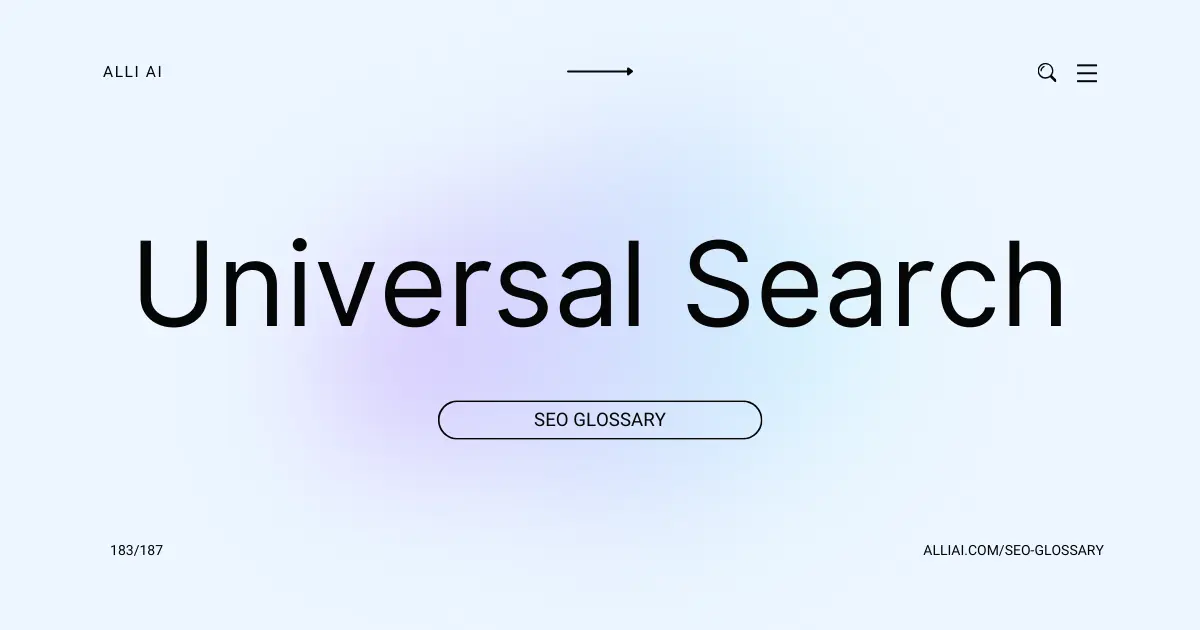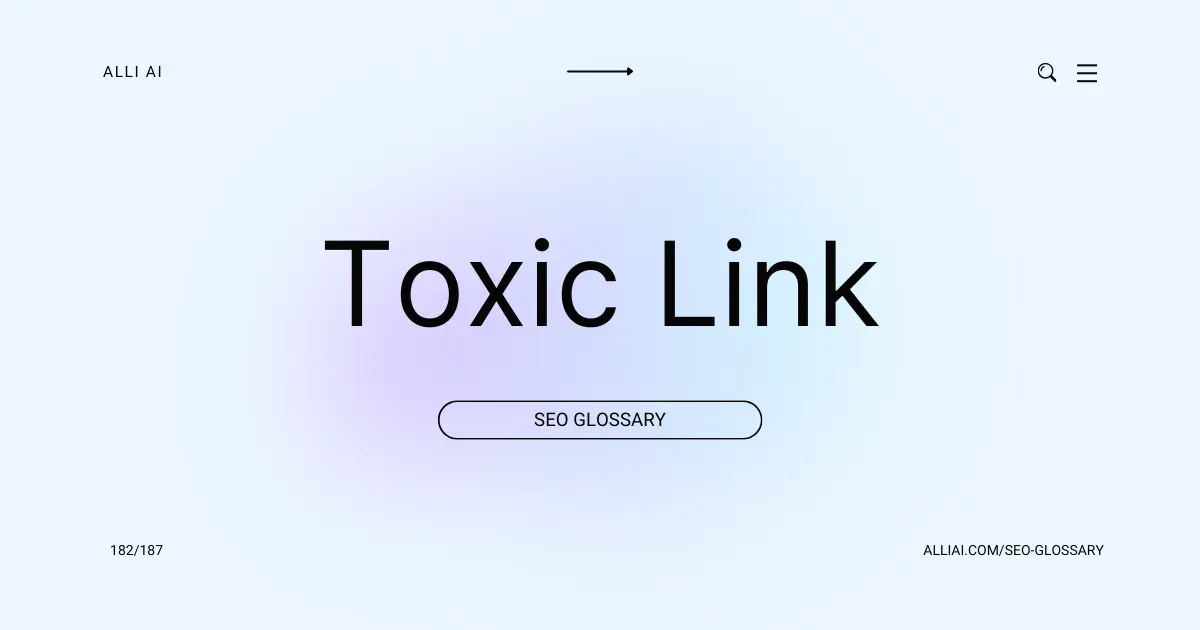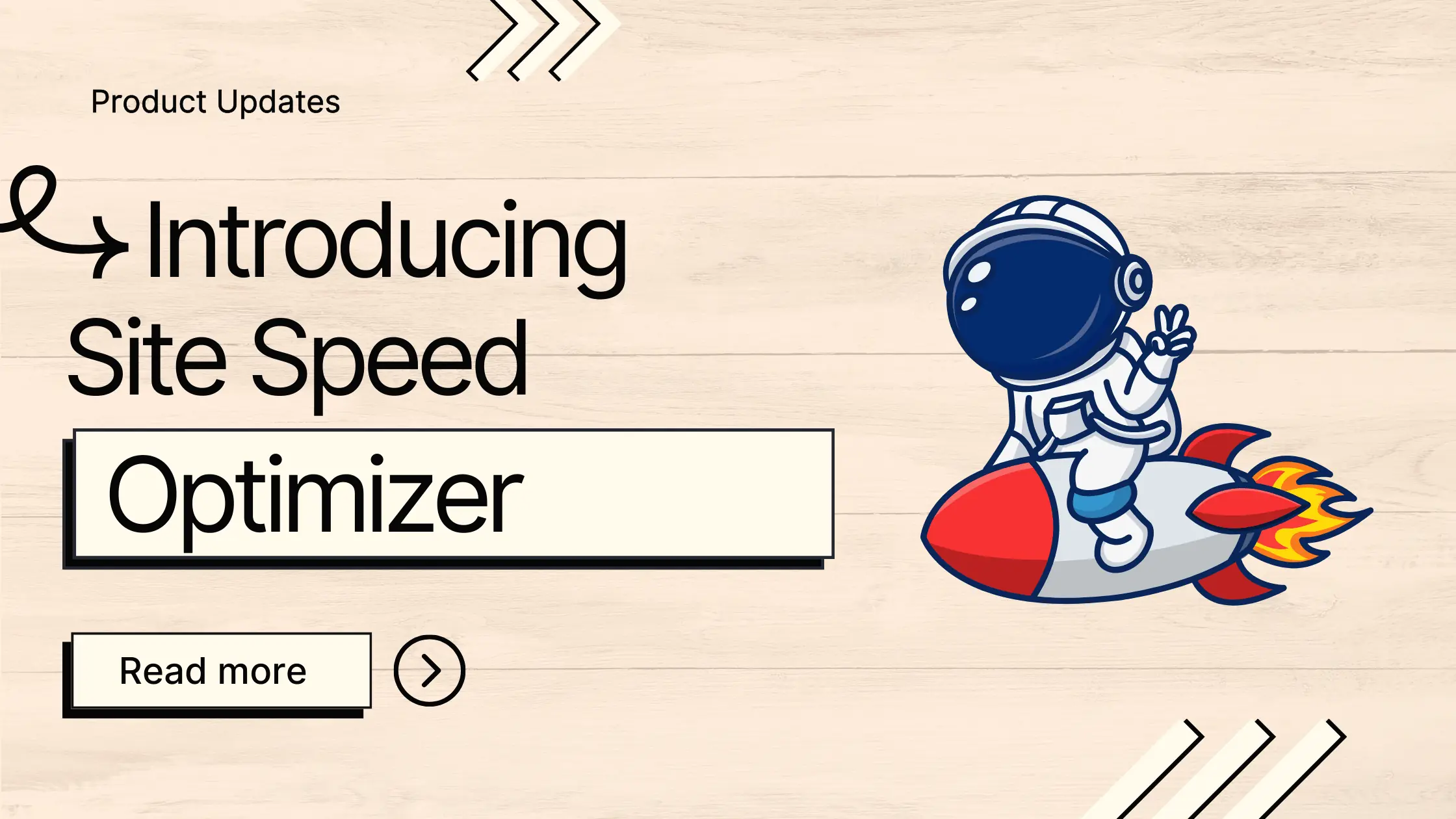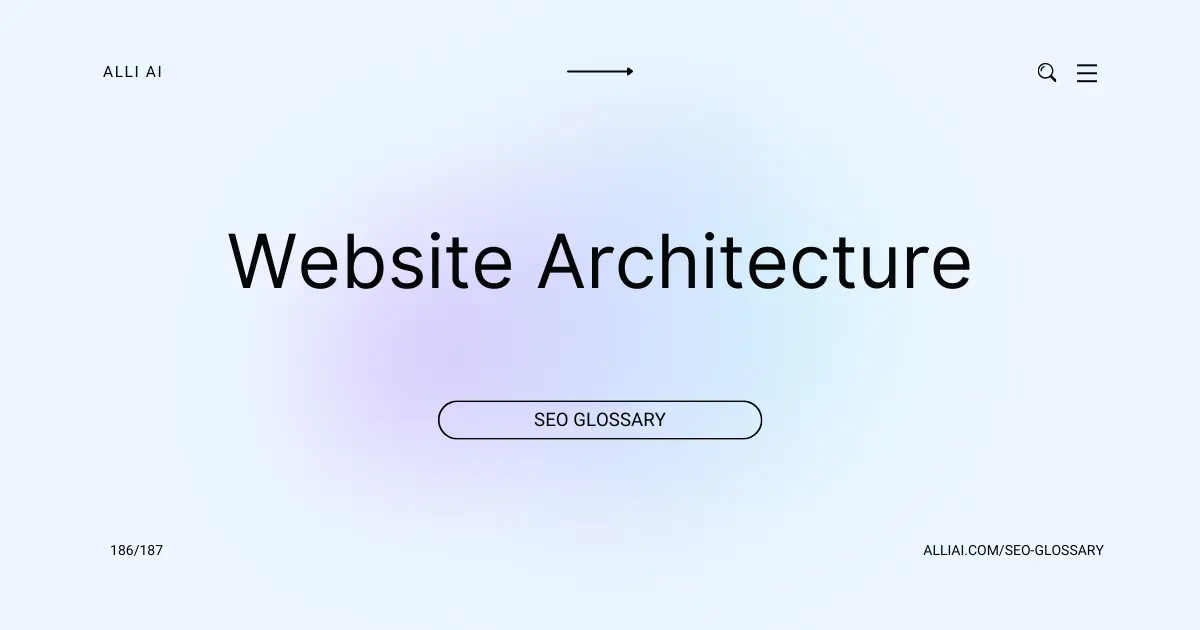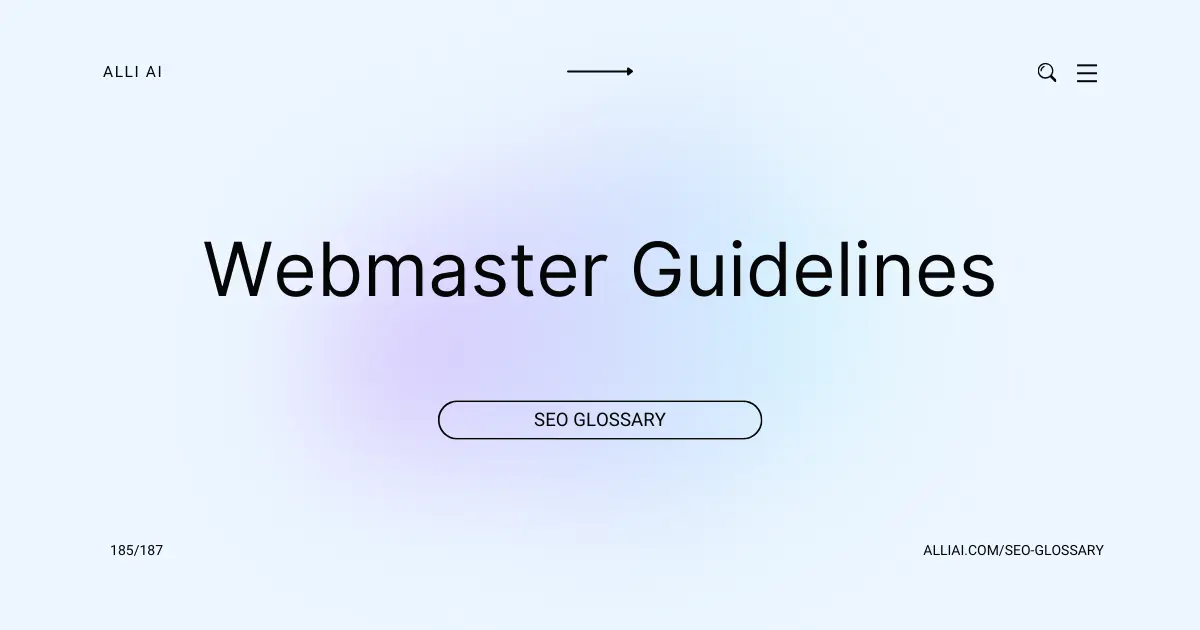What Does Link Building Mean?
Link building is the process of acquiring hyperlinks from other websites to your own. A hyperlink (usually just called a link) is a way for users to navigate between pages on the internet. Search engines use these links to crawl the web; they will crawl the links between the individual pages on your website, and they will crawl the links between entire websites. Link building can increase the number of high-quality links pointing to a website, which in turn can increase the likelihood of the website ranking highly in search engine results.
Where Does Link Building Fit Into The Broader SEO Landscape?
Link building is a component of off-page SEO, linking it directly with strategies that enhance the reputation and authority of a website in the eyes of search engines. This involves acquiring hyperlinks from other websites to your own, which search engines use as signals to gauge the site’s credibility and relevance. A robust portfolio of backlinks can improve a site’s visibility and ranking in search engine results pages (SERPs), as these links are indications of the endorsed content from other sites. Link quality, relevance, and the context within which links occur are critical, as search engines prioritize links that are naturally acquired and come from trustworthy sources. This linking strategy works in tandem with on-page SEO, which focuses on optimizing site content for relevant keywords and user experience, and technical SEO, which enhances site architecture and ensures search engines can effectively crawl and index the website.
Real Life Analogies or Metaphors to Explain Link Building
1. Gardening: Just as a gardener plants seeds and nurtures them to grow a thriving garden, an SEO expert strategically places links throughout the internet to grow a network that blossoms into higher search engine rankings.
2. Building Bridges: Imagine each link as a bridge connecting two cities. The more bridges (links) a city (website) has, the more accessible and popular it becomes, encouraging more traffic and interactions.
3. Voting System: Each link to a website is like a vote in an election. The more votes a candidate (website) receives, the more authoritative and trustworthy they appear, boosting their visibility in search results.
4. Spider Web: Just as a spider weaves a web to catch food, a webmaster weaves a network of links to catch traffic. The wider and stronger the web, the more success in capturing interest.
5. Networking Event: Think of link building like attending a networking event where every handshake (link) is a potential lead to new opportunities and improved reputation, enhancing one’s standing within the community.
How the Link Building Functions or is Implemented?
1. Identify Target Keywords: Determine relevant keywords that you want your site to rank for.
2. Content Creation: Develop high-quality, valuable content that is relevant to your target keywords.
3. Find Potential Link Partners: Research websites, blogs, and forums that are relevant to your content’s subject matter.
4. Outreach: Contact the owners or webmasters of these potential partner sites through personalized emails, social media messages, or phone calls, proposing a link to your content.
5. Link Placement: Upon agreement, get your link placed on their website. This could be within an existing page, a new blog post, or a resource page.
6. Guest Blogging: Write articles for other websites where you can naturally include links to your own website within the content.
7. Broken Link Building: Identify broken links on other websites within your niche, contact the webmaster, and suggest your content as a replacement for the broken link.
8. Link Reclamation: Find mentions of your brand or content on other sites that aren’t linking to you and request the addition of a link.
9. Use of Social Media: Promote your content on social media platforms to increase visibility and encourage organic links.
10. Monitor Backlinks: Use tools like Ahrefs, SEMrush, or Google Search Console to track the links you acquire and evaluate their impact on your SEO performance.
11. Competitive Link Analysis: Analyze backlinks of competitors to identify where they are getting links and target similar sources.
12. Compliance with Google Guidelines: Ensure that all link building strategies comply with Google Webmaster Guidelines to avoid penalties.
Impact Link Building has on SEO
Link building significantly impacts a website’s SEO performance by increasing domain authority and trustworthiness, which are key metrics used by search engines like Google to rank sites. High-quality backlinks from reputable sites signal to search engines that the content is valuable, credible, and relevant, improving the site’s visibility and ranking in search engine results pages (SERPs). This can lead to increased organic traffic.
Strategically acquired backlinks also help in indexing newer or less exposed pages faster as search engine bots discover these links pointing to lesser-known content, thereby facilitating quicker inclusion in search results. Moreover, linking from sites with high traffic can directly boost incoming traffic through referred visitors, enhancing user engagement and potentially increasing conversion rates.
However, poor link building practices such as acquiring links from low-quality or irrelevant sites can lead to penalties from search engines, ultimately harming SEO performance. Similarly, an over-reliance on link quantity over link quality can negatively impact user experience, as it may lead to spammy content and reduce the overall credibility and usability of the website.
SEO Best Practices For Link Building
1. Identify Your Target Audience: Understand who you are trying to reach with your content. This will guide your link-building efforts.
2. Create High-Quality Content: Develop helpful, informative, and engaging content that is better than existing content on similar topics.
3. Use Keyword Research Tools: Utilize tools like Ahrefs, SEMrush, or Moz to find relevant keywords and phrases that your target audience is searching for.
4. Optimize Content for SEO: Make sure your content is optimized for the target keywords. Include these keywords in the title, headers, and throughout the content.
5. Build a List of Potential Linking Sites: Research websites, blogs, and influencers that have previously linked to similar content or are considered authorities in your field.
6. Reach Out for Guest Posting: Contact the owners or editors of relevant blogs and websites, offering to write a guest post. This can include a link back to your own site.
7. Use Broken Link Building: Find broken links on relevant websites, and contact the site owner to suggest replacing the broken link with a link to relevant content on your site.
8. Engage on Social Media: Promote your content on social media platforms to increase visibility and encourage shares and links from other users.
9. Monitor Your Backlinks: Use tools like Google Search Console or Ahrefs to track your backlinks. This helps you understand which strategies are working.
10. Analyze Competitor Links: Study where your competitors are getting their backlinks. Aim to secure links from the same or similar sources.
11. Follow Up: Send follow-up emails to ensure your requests for guest posts or link placements are being considered.
12. Track Your Progress: Use SEO tools to monitor changes in your website’s ranking and the impact of your link-building efforts on traffic and engagement.
13. Adjust Strategies as Needed: Based on the performance analytics, refine your link-building approaches to improve results continuously.
Common Mistakes To Avoid
1. Focusing on Quantity Over Quality: Prioritize links from high-authority, relevant sites over a large number of low-quality links.
2. Neglecting Nofollow Links: Balance dofollow links with nofollow links to create a more natural link profile.
3. Ignoring Anchor Text Diversity: Use varied anchor text, avoiding excessive use of keyword-rich anchors which can look spammy.
4. Using Automated Tools for Link Building: Avoid automated link-building tools that can lead to spammy link practices; opt for manual outreach.
5. Paying for Links: Steer clear of buying links as it is against Google’s guidelines and can lead to penalties.
6. Failing to Monitor Link Quality and Placement: Regularly check that backlinks come from reputable sites and are contextually placed.
7. Neglecting Internal Linking: Utilize internal links to improve site navigation and distribute page authority throughout your site.
8. Overlooking Broken Link Building: Regularly search for and replace broken links which can affect user experience and SEO.
9. Ignoring Local SEO Opportunities: For local businesses, consider local SEO strategies like getting listed in local business directories.
10. Lack of Outreach Personalization: Personalize outreach emails to increase engagement and success rates in acquiring backlinks.
11. Not Aligning Link Building with Broader SEO Strategy: Ensure that your link-building efforts complement your overall SEO goals and strategy.
